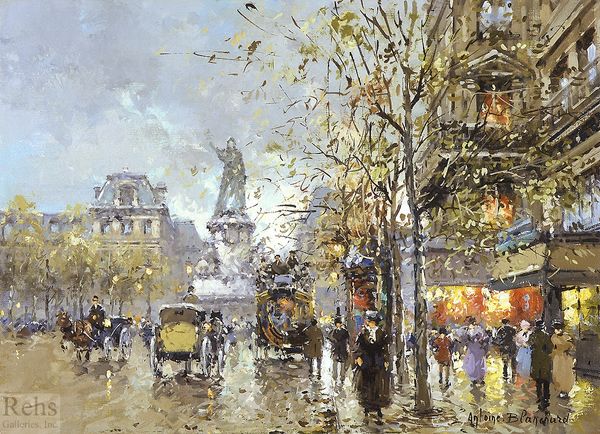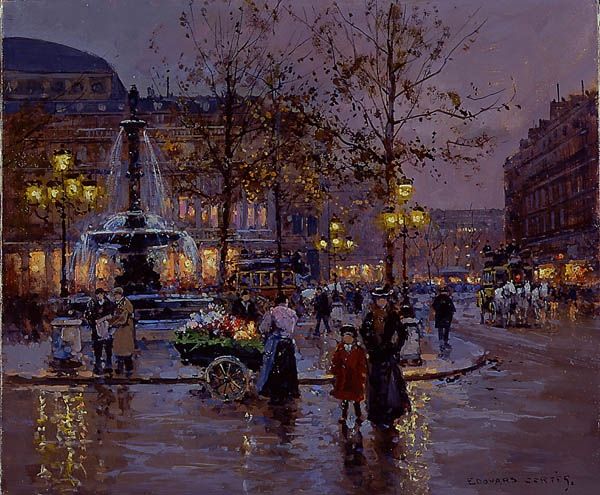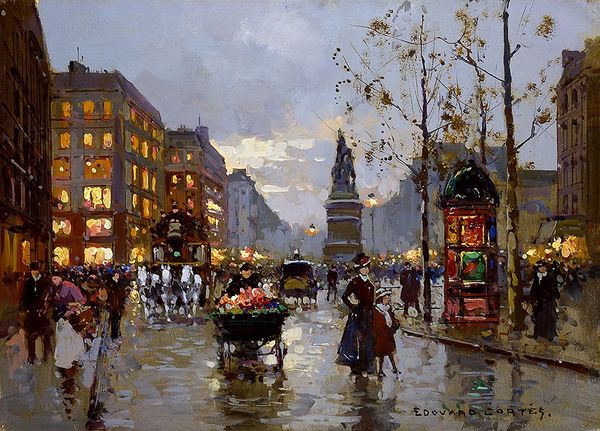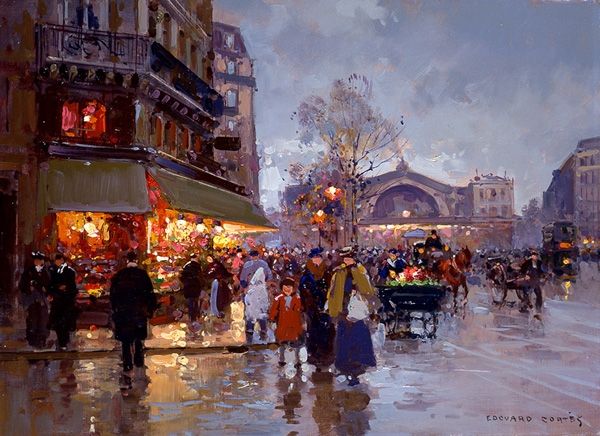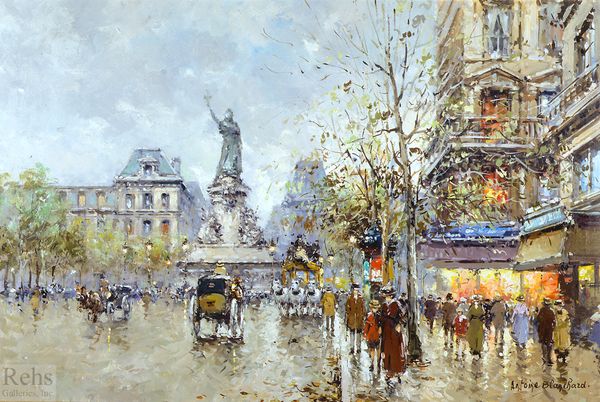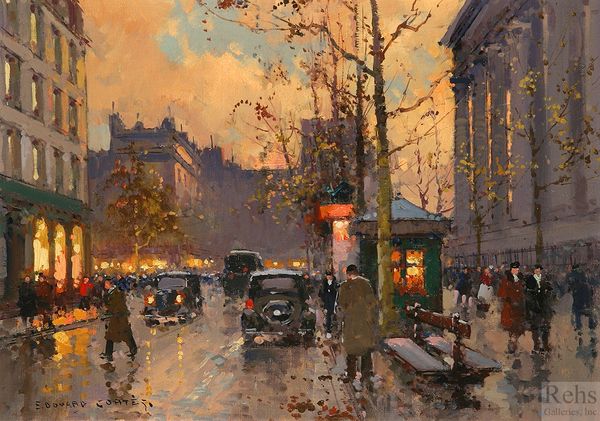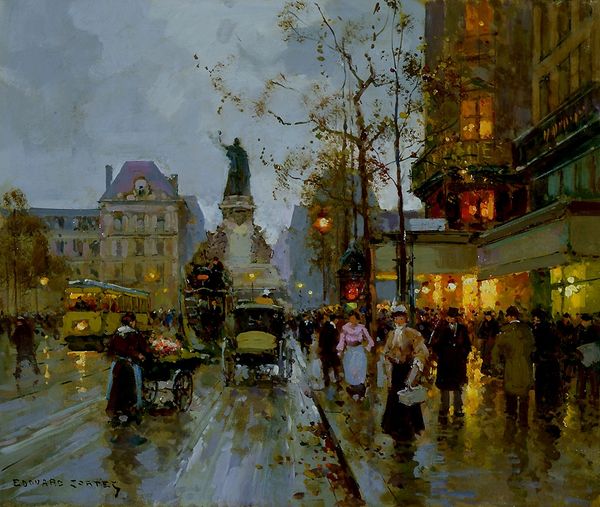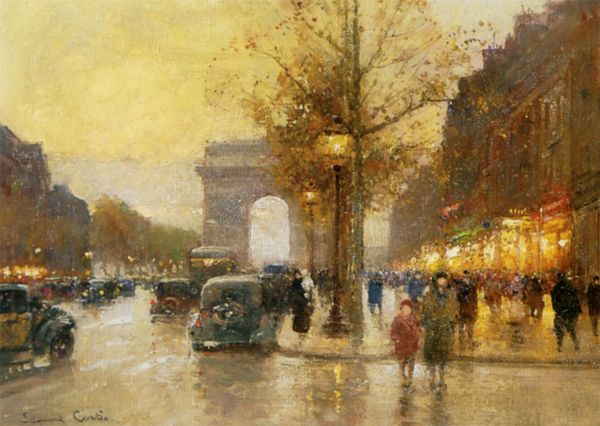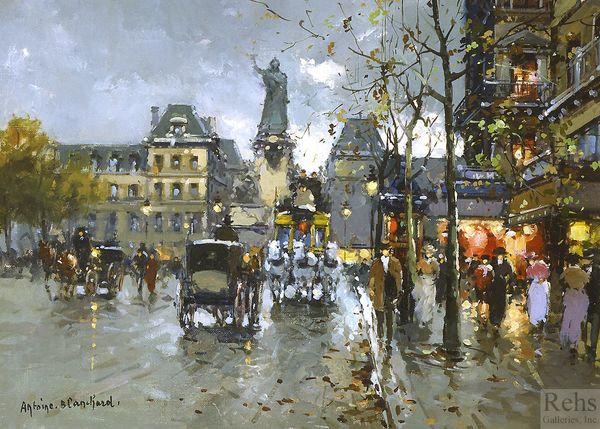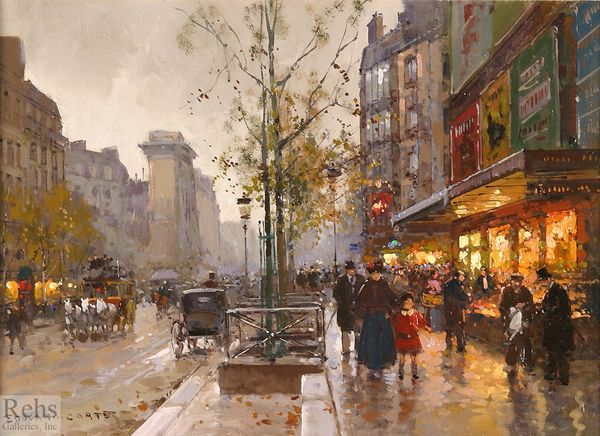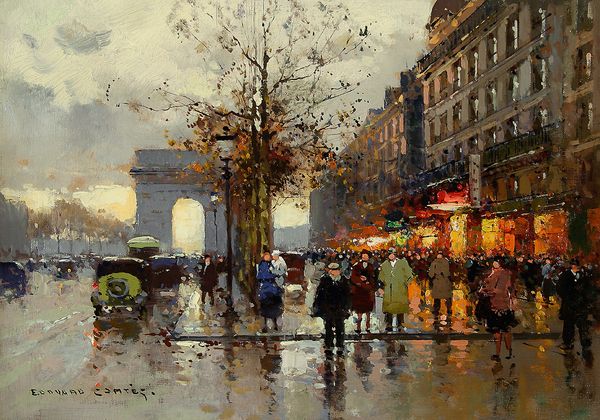
painting, oil-paint
#
painting
#
impressionism
#
impressionist painting style
#
oil-paint
#
landscape
#
impressionist landscape
#
cityscape
Copyright: Edouard Cortes,Fair Use
Editor: This is Édouard Cortès' oil painting, "Place de la Republique." The reflections on the wet street give the scene a soft glow despite the cloudy sky. What stands out to me is how he captured the bustling energy of the city street, it seems he was very interested in recording daily life. What do you make of it? Curator: Considering Cortès' work through a materialist lens highlights the commodification of Parisian life in the early 20th century. Look closely at the materials he employs – oil paint, canvas, and their respective costs – were all tied to a growing art market catering to a bourgeois clientele. Editor: So, the *way* it was made and consumed matters more than, say, its artistic merit? Curator: Precisely. How do you think the readily available transportation like the early model cars he included influenced his perspective and subsequently the choices he made as a painter? Also, what’s reflected on the canvas also reveals the culture of consumerism and what it stood for to a wider audience? Editor: I see what you mean. The painting becomes a kind of record, not just of a place, but of a specific moment in the material culture of Paris. Those cars aren't just details, but symbols of progress and access. The oil paint itself becomes a carrier of that historical weight. Curator: Exactly. The painting is more than just an aesthetic object. The materials, process, and the socioeconomic context of its creation and reception offer deeper insights into early 20th century Paris. Editor: This gives me a whole new appreciation for how an artist's materials and process are deeply intertwined with the society around them.
Comments
No comments
Be the first to comment and join the conversation on the ultimate creative platform.
